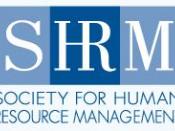SUMMARY
The essay presents the results of the student's research on human resource management, particularly on the links between business strategy and human resource strategy, and demonstrates the student's understanding of the links between HRM policies and organisational performance (CB852 Module Guide, 2002).
Section one describes the historic development and distinctive features of human resource management.
Section two introduces the notion of strategy and discusses the strategic integration of human resource policies with business strategy.
Section three identifies the factors likely to inhibit the strategic integration and explains the reasons for their potential effects.
Section four draws conclusion from the discussion and analysis performed.
SECTION 1: INTRODUCTION
Human Resource Management (HRM) is the development of personnel and industrial relations function. It involves all management decisions that affect the relationship between the organisation and employees - its human resources (Beer et al., 1984).
The history of HRM can be traced back to the development of scientific management in the early 1900s that believed any potential conflicts of interest between workers and employers can be eliminated by effective industrial engineering techniques and incentive wage systems (Kochan and Barocci, 1985).
Personnel welfare, however, was already of concern to certain families in business, e.g. Cadbury, in the late 1800s (McKenna and Beech, 2002). In the 1920s, many large companies installed employee representation plans to cater for employee satisfaction of social needs (Kochan and Barocci, 1985), and in the 1930s, the concern over the workers conditions found its way into labour legislation (Beer et al., 1984). The next two decades saw labour relation specialists rose to influential position in personnel departments (Kochan and Barocci, 1985), then in the 1960s and 1970s, the concern over equitable and fair treatment took effect in the civil rights and equal opportunity legislation (Beer et al., 1984). Personnel management...


